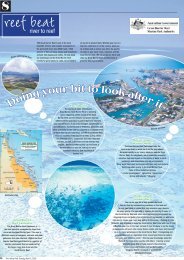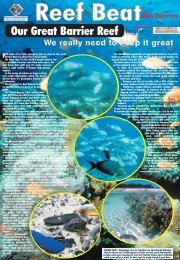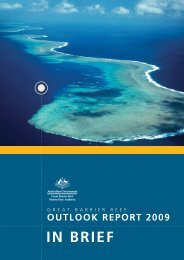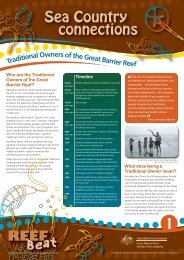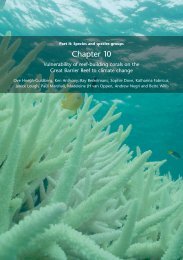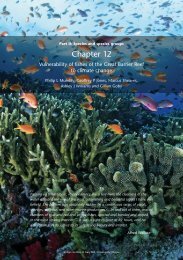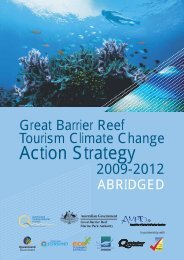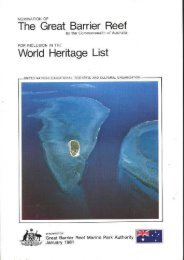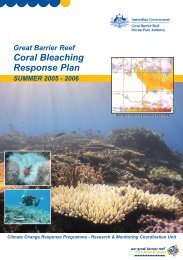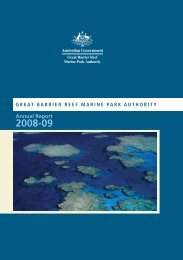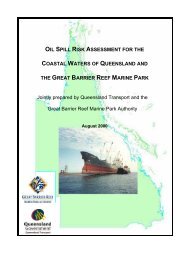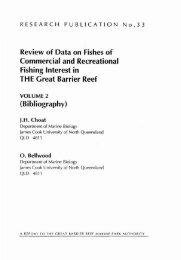ACTIVITIES BOOK - Great Barrier Reef Marine Park Authority
ACTIVITIES BOOK - Great Barrier Reef Marine Park Authority
ACTIVITIES BOOK - Great Barrier Reef Marine Park Authority
Create successful ePaper yourself
Turn your PDF publications into a flip-book with our unique Google optimized e-Paper software.
Instructions:1) Fill a container with your acidic substance (you might likestudents to trial a range of substances). You could also introduce theconcept of a scientific ‘control’ and fill one container with plain tapwater (to make sure the same outcome won’t occur in any liquid).2) Measure the pH of your substance using litmus paper or a pH testkit. You might like students to consider how the pH is related to the timeit takes for the shell to dissolve.3) Rest the egg in the weak acid overnight.4) Remove and rinse the egg and record your findings.Discussion: You have just witnessed an acid at work. Just like theacid dissolved the calcium carbonate egg shell, an acid will also eatthrough a snail shell or a coral colony. Here are some gooddiscussion questions:1. What happened to the egg shells? Why?2. Was there a difference depending on the pH of thesubstance used?3. How is pH related to ocean acidity?4. What does a lower pH mean for marine organisms?5. How are the atmosphere and the ocean connected?Bright idea: Havestudents create theirown coral reefecosystem usingrecycled materials. Eachindividual should contribute acomponent of the system whichshould work together as a large,three-dimensional reef scape.Encourage the use of rubbish andrecycled materials over newmaterials.13<strong>Reef</strong> Beat 2009 - Climate Change and the <strong>Reef</strong>



